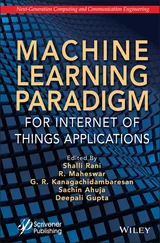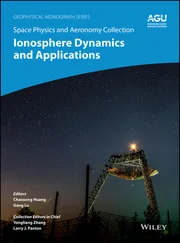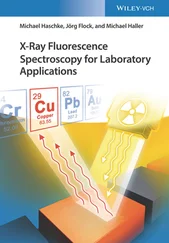Stem cells are characterized by a capacity for self-renewal while maintaining an undifferentiated state and, given the proper stimulus, the ability to differentiate into various types of specialized somatic cells. Stem cells are further classified by their relative differentiation potential. Stem cells that can differentiate into any cell type in the body are termed totipotent and have the widest differentiation potential. Mesenchymal stem cells (MSCs) are multipotent stem cells that are most closely associated with the mesodermal lineage and are known to differentiate into chondrogenic, osteogenic, myogenic, and adipogenic cell types. 1
The discovery of stem cells and their multipotent potential has encouraged the development of the whole field of research, projected to have reached $170 billion by 2020. In particular, the multipotent MSCs, with their stem-like quality to differentiate into mesodermal cell types, have been a focus. Indeed, overall revenue for MSC products was projected to be $10.9 billion from 2010 to 2020. Alongside the possibilities of therapeutic successes (ranging from treating graft-versus-host disease, Crohn disease, spinal cord injury, and use in support of hematopoietic stem cell treatments) comes the inherent ethical and logistic dilemmas behind obtaining stem cells. This chapter focuses on MSCs due to their popularity for regenerative applications.
Mesenchymal Stem Cells
Stem cell sources
First isolated in bone marrow, bone marrow–derived MSCs were found to be precursors to multiple cell types and could be viably cultured while retaining their capacity for multilineage differentiation. Obtained from an invasive bone marrow harvesting procedure, bone marrow–derived MSCs avoid the ethical concerns as well as tumorigenicity of embryonic stem cells and have subsequently been used in a nearly exponential increase in research studies and trials. 2Unfortunately, bone marrow–derived MSCs are relatively low yield and limited to autologous use, requiring in vitro expansion that increases the risk of contamination. Additionally, harvesting the cells requires a surgical procedure with associated donor morbidity and risk, and the potency (ie, “stemness”) has been questioned when compared with more recently discovered sources of MSCs. 3
One of these sources is umbilical cord blood (also known as cord blood ), collected via venipuncture of the typically discarded umbilical cord. Painless and without morbidity, cord blood is considered superior to human bone marrow stem cells in its harvesting and yield. Cord blood is cryopreserved in two main methods using dimethyl sulfoxide (DMSO): (1) red cell reduction, which is less expensive to store and easier to defrost; and (2) plasma depletion, which is more economical to process. Public cord blood banks cost about $1,500 to $2,500 per unit stored, while private banks typically charge an initial processing fee of $1,400 to $2,300 plus annual storage costs of $115 to $150. However, MSCs only represent a small proportion—1,000 to 5,000 MSCs in one 100-mL unit of cord blood—of the cell types within cord blood, which includes hematopoietic cell types, endothelial and progenitor cells, as well as MSCs. 4
There has also been recent attention toward Wharton’s jelly (WJ) within umbilical cords. WJ was found at the turn of the century to contain a multipotent, fibroblast-like MSC population with greater multipotent potency, faster proliferation, and longer life spans than adult bone marrow–derived MSCs. 3This is a result of reduced telomere length. Telomeres shorten with age, eventually resulting in cellular senescence. MSCs isolated from cord blood are much younger than adult MSCs and possess significantly longer telomeres. 5
MSCs in WJ are an entity apart from cord blood MSCs and endothelial cells from the umbilical vein. The plentiful presence of MSCs in WJ is theorized to either be due to the trapping and retaining of fetal MSCs during the two waves of migration of fetal MSCs in early development or to the fact that the cells in WJ are actually primitive MSCs that originate from mesenchyme already present in the umbilical cord matrix. More research has been focused on not only the characterization and usage of these WJ-derived MSCs, but also on discrete differences of the stem cell populations depending on the anatomical region of the WJ. 6
The most recent development is that what was once thought to be a single mass providing uniform MSCs is actually more anatomically distinct. There are six different zones of the cord with cells in various stages of differentiation: (1) the surface (amniotic) epithelium, (2) subamniotic stroma, (3) clefts, (4) intervascular stroma, (5) perivascular stroma, and (6) vessels. However, the descriptors separating these zones are not clear. It is thought that WJ is composed mainly of perivascular progenitors but may possibly include nonperivascular progenitors as they move away from the vasculature. 6In addition to the anatomical differences, there is concern that the MSCs may differ lengthwise and that the mother end of the umbilical cord may have different mesenchymal features than the fetus end of the umbilical cord. 7
In addition to harvesting and potency advantages, cord blood and WJ-derived MSCs are also not limited to autologous use. Due to their excellent immunomodulatory properties and universally tolerated surface marker profiles, MSCs isolated from cord blood and WJ can be made available to patients as allografts. 8 , 9Using cells isolated from birth tissue as “off-the-shelf” allografts greatly simplifies the manufacturing process of MSCs for therapeutic use, providing a standardized, scalable method of producing cells that does not need to be personalized for each patient.
Importance of the secretome
The therapeutic effectiveness of MSCs is well documented, especially as it pertains to wound healing. However, the mechanisms of action are not well understood. Stem cells are partially defined as cells that are capable of differentiation into a variety of specialized somatic cells, and this knowledge has fueled speculation that cell differentiation upon engraftment is responsible for the observed therapeutic effects. On further investigation, it would appear that this is not the case.
Recent research has shown that MSCs introduced therapeutically primarily function through trophic and immunomodulatory signaling pathways, and the stem and progenitor cells of the host actually do most of the work. 10This is why the secretome , or the collection of bioactive molecules secreted from the cells, has been receiving more attention from researchers. Rich in growth factors and cytokines that are associated with modulating inflammation and promoting angiogenesis, the MSC secretome seems perfectly suited to enhance wound healing. This is evidenced in human physiology by the ability of MSCs to zero in on areas of inflammation and injury and secrete bioactive factors. 11
The regenerative effects of growth factors and cytokines have been well documented in dentistry. Peptides in the transforming growth factor β (TGF-β), bone morphogenetic protein (BMP), fibroblast growth factor (FGF), and interleukin (IL) families are crucial components driving regeneration, especially as it relates to bone growth. 12These factors stimulate host cells in regenerative pathways, but it can be challenging to maintain dosing and ensure efficient cell uptake of these factors therapeutically. The MSC secretome is rich in many of these peptides, suggesting that the secretome could be responsible for some of the observed therapeutic effects. 13
Читать дальше












